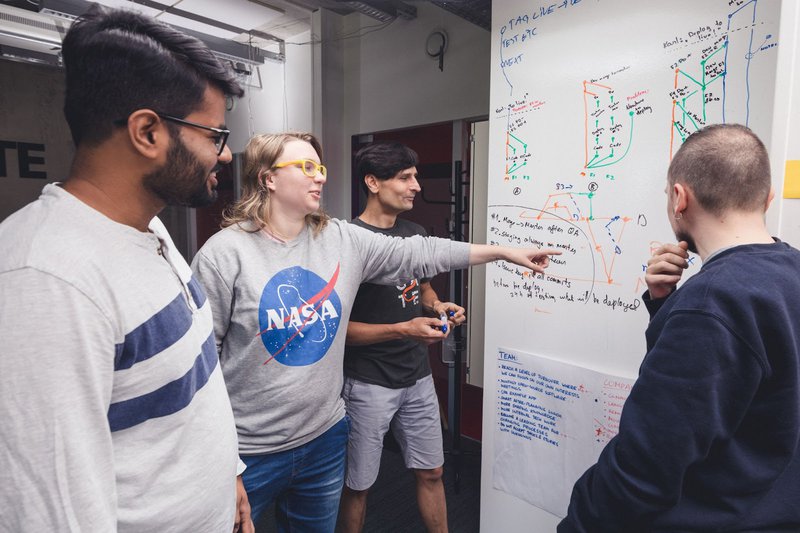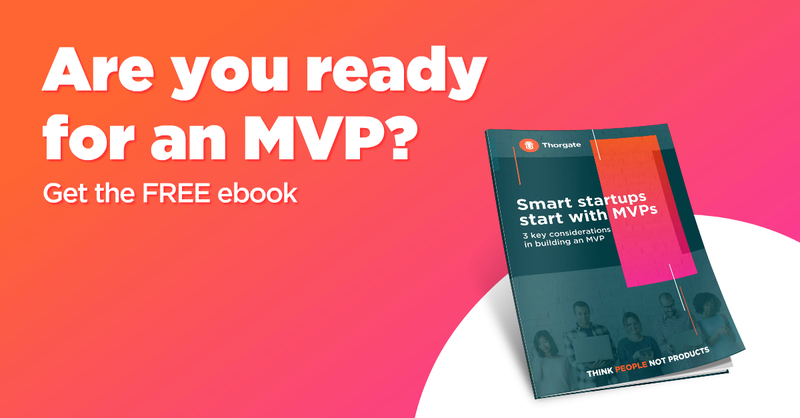Checking whether there's demand for your idea is one of the first steps you must take as a startup to ensure you're not wasting your time and money.
Your product's success depends on how well it solves a problem that many people struggle with and it's essential to consult with these potential users as often as possible to verify that your solution is going in the right direction. This way, you'll avoid spending a small fortune creating a product that nobody needs.
There are a number of ways to go about validating your idea. Most startups will employ several of these so that they can verify the results they gain from one method, with the results from a different one. Let's take a look at three different idea validation strategies—customer interviews, Fake Doors experiments, and Concierge tests—that are low-cost and will serve to ensure you're on the right track.
1. Customer interviews
The most commonly used idea validation strategy is customer interviews. Getting your potential customers in a (virtual) room and picking their brains about what their day-to-day looks like and how it could be enhanced with your product will provide you with crucial insights into what's expected from your solution.
Ultimately, you want to find out 3 things – who are your customers, what exactly are they struggling with, and what would make them choose your solution over a competitor's.
It's not a simple task and running proper interviews requires considerable skill – inexperienced interviewers run the risk of getting false positives as answers, which can corrupt the entire project from the get-go. As such, a conscious effort is needed to avoid leading interviewees into answers you want to hear. To do that, one must craft adequate and unbiased questions, let the customer express themselves freely with open-ended questions, and evaluate the resulting data as critically as possible. For this reason, it's suggested to involve several people in the process to ensure diverse perspectives.
2. Fake Doors experiment
A Fake Doors experiment is a method where you pretend to have a ready product to gauge real-world interest – build a website, craft the copy, add a CTA, perhaps even develop the purchase process that stops at a “Thank you for your interest” page before a purchase is completed.
The goal is to see whether anyone is interested enough in your value proposition to sign-up for or purchase your product. By driving real traffic that is oblivious to the experiment, you gain unbiased insights with people truly believing and acting as if your offer were real.
The Fake Doors method makes it possible for you to build an audience (the people who are interested in your product) that can serve as testers for early product prototypes and as your first customers when the product actually goes live. More than that, it pushes you to work on messaging and marketing from day one, so that on the day of release your product positioning will be polished and data-informed, maximizing your chances of success.
An example of this method includes creating a landing page with preliminary information about your startup and team, with a call-to-action to get pre-orders, or newsletter subscriptions, or even a request for early access to the product (anything that helps you build that email list). Additionally, you could add your milestones timeline, visuals showing your product, refer to a friend link and most importantly the pain point of your customer that you are addressing.
3. Concierge test / Wizard of Oz method
The Concierge test is when you validate your product idea by manually performing the functionalities that you plan to develop. If you do this without the customer knowing, then it's known as the Wizard of Oz method. This can be anything from manually performing calculations and sifting through data to creating and shipping products, and more.
For example, the founder of the online shoe store Zappos famously verified his idea by manually listing products on his website and then purchasing and shipping shoes from nearby stores, instead of building an inventory from day one.

The Concierge test allows startups to both explore demand for their product as well as determine the best way to approach its development. Not having to create the technology allows teams to iterate quickly and pivot if necessary while keeping costs low. A Concierge test is particularly valuable for startups that have identified a problem they wish to solve and are still ideating the best way to approach it.
Validating your idea or learning in which direction to pivot is a prerequisite for startup success. Don't rush blindly into product development just because YOU think it's a great idea. Use the strategies above to determine whether the market agrees.

Download our free eBook – Smart Startups start with MVPs – to learn all about MVPs, building them, and who to entrust with their development.
Or book a free consultation call with an expert here
Read More
Let's talk!
We want to offer you valuable insights to help make the right product development choices!
If you would like to discuss an idea, product development strategy or more, then feel free to write to us.



